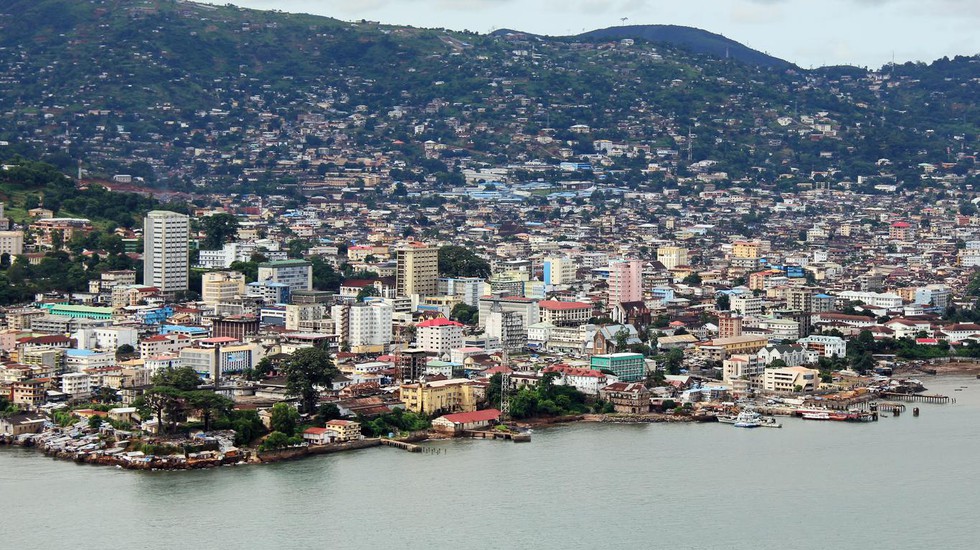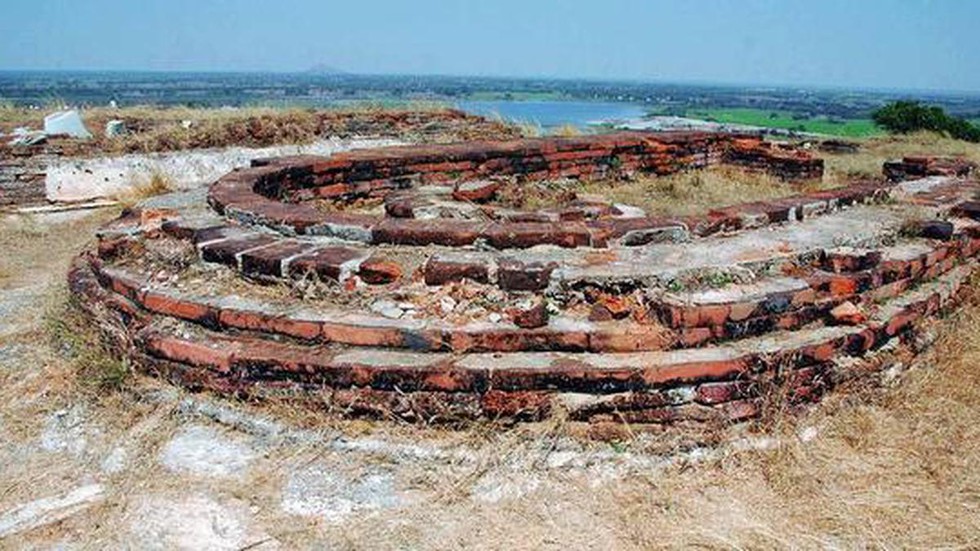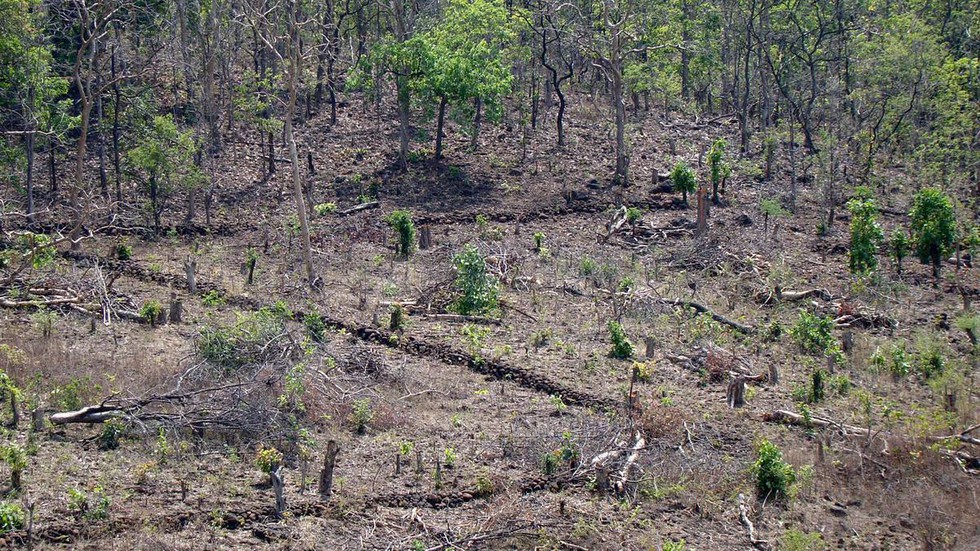
About Nimmu-Padum-Darcha Road:
- It serves as a vital link between the Indian Union territory of Ladakh and the state of Himachal Pradesh, traversing through the picturesque region of Zanskar, Ladakh.
- It is an all-weather road from Manali (Himachal Pradesh) to Leh (Ladakh) through Darcha and Nimmu on the Kargil–Leh Highway. It was constructed by the Border Roads Organisation (BRO).
- It crosses only one pass—Shinkun La (16,558 feet)—on which tunnel work is about to commence by the BRO. It will be the first all-weather road connecting Ladakh to the rest of the country.
- The connectivity will strengthen defence preparedness and provide a boost to economic development in the Zanskar valley.
2. Changpa Tribe

About Changpa Tribe:
- The Changpa, or Champa, are semi-nomadic people found mainly in the Changtang plateau of southeastern Ladakh. They share linguistic and cultural affinities with Tibetans.
- All Changpa families profess Tibetan Buddhism as their religion. They are high-altitude pastoralists, raising mainly yaks and goats.
- They can be identified by their conical yak-skin tents called reboo.
- Each reboo invariably accommodates the family deity, and a picture of their spiritual head, in most cases, the Dalai Lama.
- Semi-nomadic Lifestyle:
- The Changpa who live nomadic lives are known as Phalpa, while those who have settled down in fixed locations are called Fangpa.
- For many Changpas, rearing of animals and consuming and selling their produce (milk and its products, hair, and meat) is the only means of livelihood.
- They rear the highly pedigreed and prized Changra goats (Capra Hircus) that yield the rare Pashmina (Cashmere) fibre. It is the finest fibre of all goat hair.
- Their Buddhist belief does not allow them to kill animals for meat. It is only when animals die a natural death that the carcasses can be used for meat and hide, which the Changpas use to line their huts and make garments.
- In 1989, the Changpa were granted official status in India as a scheduled tribe.
3. Azad Hind Government

About Azad Hind Government:
- In 1943, on October 21, Netaji Subhash Chandra Bose announced the formation of the ‘Arzi Hukumat-e-Azad Hind’ or the provincial government of free India in Singapore and declared war on the British Empire.
- Under the provisional Government, Bose was the Head of State, Prime Minister and Minister of War.
- Captain Lakshmi headed the women’s organisation while SA Ayer headed the publicity wing in the newly formed government.
- Revolutionary leader Ras Behari Bose was designated as the supreme adviser by Netaji Subhash Chandra Bose.
- The government was supported by the Axis powers of Imperial Japan, Nazi Germany, the Italian Social Republic and their allies.
- Significance of the Azad Hind government:
- Soon after the formation of the government, the Azad Hind government proclaimed authority over Indian civilian and military personnel in Southeast Asian British colonial territory and prospective authority over Indian territory to fall to the Japanese forces and the Indian National Army during the Second World War.
- The provisional government not only enabled Bose to negotiate with the Japanese on an equal footing but also allowed him to mobilise Indians living in East Asia to join and support the Indian National Army (INA).
- The Indian National Army drew ex-prisoners and thousands of civilian volunteers from the Indian expatriate population in Malaya (present-day Malaysia) and Burma (now Myanmar).
- The provisional government was also formed in the Japanese-occupied Andaman and Nicobar Islands. The islands were reoccupied by the British in 1945.
- The Azad Hind government under Bose had in fact started its own bank, currency, civil code and stamps.
- Bose had even formed the first women’s regiment of the INA, the Rani Jhansi Regiment, thus laying the foundation for equal opportunity for women in armed forces.
4. What is Agnibaan SOrTeD?

About Agnibaan SOrTeD:
- Agnibaan SubOrbital Technological Demonstrator (SOrTeD) is a single-stage launch vehicle powered by AgniKul’s patented Agnilet engine.
- It is the world’s first single piece 3D printed semi-cryogenic rocket engine.
- It will be launched from India's first private launchpad, ALP-01, located inside the Indian space agency ISRO’s Sriharikota spaceport.
- Features:
- It is India’s first ever vehicle equipped with a semicryogenic engine, the Agnilet, a subcooled liquid oxygen-based propulsion system developed indigenously.
- The rocket engine will burn kerosene in liquid oxygen and can be directly used in the rocket.
- It can carry a 100-kg payload up to a height of 700 km with a lift of mass of 14,000 Kgs.
- It can access both low- and high-inclination orbits and is completely mobile.
- It will also have the first ever Ethernet-based avionics architecture and fully in-house developed autopilot software from India.
- To ensure its compatibility with multiple launch ports, AgniKul has built a launch pedestal named 'Dhanush' that will support the rocket's mobility across all its configurations.
Points to Remember:
- AgniKul Cosmos is an IIT Madras incubated space start up based in Chennai.
- It became the first company in the country to sign an agreement with ISRO under the IN-SPACe initiative to have access to the space agency’s expertise and its facilities to build Agnibaan in December 2020.
- In 2022, Agnikul inaugurated India’s first private launchpad and mission control centre at Satish Dhawan Space Centre.
5. Key Facts about Sierra Leone

About Sierra Leone:
- It is a tropical country in West Africa. It is bordered on the north and east by Guinea, on the south by Liberia and on the west by the Atlantic Ocean.
- Geography: The nation is largely made up of lightly wooded hills with a concentration of mangrove swamps along the coast.
- Rivers: Some of the major ones include the Rokel River, Taia River, Moa River and Sewa River.
- History:
- Sierra Leone was colonized in 1787 by formerly enslaved people arriving from England; other groups followed from Nova Scotia (1792) and Jamaica (1800).
- They were sponsored and governed by the private Sierra Leone Company until 1808, when Britain made Sierra Leone a crown colony.
- In 1961, Sierra Leone became independent of the UK.
- Language: English is the official language; however, Krio is the language that is understood by most of the population.
- Government: It is a constitutional republic with a directly elected president and a unicameral legislature.
- Capital: The capital, Freetown, commands one of the world’s largest natural harbours.
- Economy:
- Although most of the population is engaged in subsistence agriculture, Sierra Leone is also a mining centre.
- Its land yields diamonds, gold, bauxite and rutile (titanium dioxide).
6. World Health Day

About World Health Day:
- It is aimed at raising awareness about global health issues and encourage people to live healthier.
- History
- The origin of World Health Day goes back to 1948 when First Health Assembly was held by the organisation, where it was decided to commemorate April 7 as World Health Day and it came into effect in 1950.
- Over the years, the celebrations have aimed to create awareness around a specific health theme to highlight a priority area of concern for the World Health Organization.
- The theme of 2024 World Health Day is 'My health, my right'. This theme was chosen to champion the right of everyone, everywhere to have access to quality health services, education and information, as well as safe drinking water, clean air, good nutrition, quality housing, decent working and environmental conditions and freedom from discrimination.
7. What is Arrokoth?

About Arrokoth:
- It is one of thousands of ‘icy worlds” in the Kuiper Belt or the outer zone of the solar system that lies beyond Neptune. In the language of the Powhatan tribe, Arrokoth means “sky”.
- It is the farthest object in space that has been explored by a human space-craft. It was discovered in 2014 using the Hubble Space Telescope.
- It is a double-lobed object and resembles a snowman. It is believed it may have ancient ‘gaseous ice’ stored deep within it from when the object first formed billions of years ago.
Key facts about Kuiper Belt:
- It is also called the Edgeworth-Kuiper belt, is a flat ring of small icy bodies that revolve around the Sun beyond the orbit of the planet Neptune.
- It is named after Gerard Kuiper, a Dutch-American astronomer who hypothesised the existence of such a region in the 1950s.
- There are millions of these icy objects, collectively referred to as Kuiper Belt objects (KBOs) or trans-Neptunian objects (TNOs), in this belt.
- Composition: The Kuiper Belt is primarily composed of small icy bodies, such as dwarf planets, asteroids, and comets.
8. Phanigiri

About Phanigiri:
- It is a famous Buddhist site located 110 km away from Hyderabad. It derived its name from the shape of the hillock, which appears to be like a snake hood. The word Phani in Sanskrit means snake and Giri means hillock.
- It is believed to be one of the important Buddhist monasteries strategically located on the ancient trade route (Dakshinapatha) connecting the west and the east coast of the Deccan.
- Other findings of the excavation:
- Coins: Lead coins with elephant symbol on one side and Ujjain symbol on the other side are found. According to the archaeologists, the coins belong to the Ikshvaku period dated between 3rd century and 4th century Common Era.
- Also, stone beads, glass beads, shell bangle fragments, stucco motifs, broken limestone sculptures, a wheel of a toy cart, final nails and pottery are excavated.
- Mahastupa, apsidal Chaityagrihas, Votive stupas, pillared congregation halls, Viharas, platforms with staircases at various levels, octagonal stupa chaitya, 24-pillared mandapam, circular chaitya and cultural materials that included terracotta beads, semi-precious beads, iron objects, Brahmi label inscriptions and holy relic casket are also excavated.
- All the cultural material is datable from the 1st century BCE to 4th century CE.

About Green Credit Programme:
- It aims to incentivise environmentally conscious practices and promote a sustainable lifestyle through a market-based mechanism.
- Green credits generated through such actions can be traded on a domestic market platform.
- According to rules, environment-friendly actions include:
- Tree plantation, water management, sustainable agriculture, waste management, air pollution reduction, mangrove conservation and restoration, ecomark label development and sustainable building and infrastructure.
- As per the scheme, individuals, industries, farmers producer’s organisations (FPOs), urban local bodies (ULB), gram panchayats and the private sector, among a host of other entities, will be able to earn green credit for undertaking environment-friendly actions.
- Under the scheme, registered and approved entities can pay to finance afforestation projects in specific tracts of degraded forest and wasteland. The actual afforestation will be carried out by State forest departments.
- In its initial phase, the GCP focuses on two key activities: Water conservation and Afforestation
- Implementing Agency: Two years after planting — and following an evaluation by the International Council of Forestry Research and Education (ICFRE), an autonomous body of the Environment Ministry — each planted tree could be worth one ‘green credit’.
- The Green Credit Registry and trading platform, being developed by ICFRE along with experts, would facilitate the registration and thereafter, the buying and selling of Green Credits.
10. What is Well-known trademark?

About Well-known trademark:
- The Trade Marks Act, 1999, provides protection to well-known trademarks to prevent misuse and obligates the Registrar to safeguard them against similar trademarks.
- Once a mark is declared well-known, the owner can prevent others from registering or using identical or similar marks for different goods and services. It can be licensed or franchised to others, providing the owner with an additional source of revenue.
- Factors that can be considered when determining whether a trademark is well-known are:
- The degree of knowledge or recognition of the mark
- The duration, extent and geographical area of any use of the mark
- The duration, extent and geographical area of any promotion of the mark
- The degree of inherent or acquired distinctiveness of the mark
- The extent to which the mark has been registered in India or in other countries.
- Significance of Well-known Trademark:
- They are highly valuable assets for businesses. They contribute to brand recognition, consumer trust and market competitiveness.
- The recognition of a trademark as "well-known" grants it additional protection against unauthorized use, even for goods or services not directly related to the original trademark. This protection helps prevent consumer confusion and safeguards the reputation and distinctiveness of the mark.
What is a trademark?
- It is a distinctive sign or indicator used by a business organisation to distinguish its products or services from those of other entities.
- It serves as a badge of origin exclusively identifying a particular business as a source of goods or services.


























































































































































.png)
.png)
.png)
.png)
.png)


.png)
.png)
.png)





.png)
.png)






.png)
.png)
.png)
.png)
.png)
.png)
.png)
.png)
.png)

.png)







.png)
.png)


.png)
.png)
.png)


.png)

.png)
.png)





.jpg)

.png)
.png)


.png)

.png)
.png)
.png)

.jpg)

.jpg)


.png)

.png)
.png)
.png)
.png)
.png)
.png)
.png)
.png)
.png)
.png)




.png)

.png)





.png)
.png)
.png)
.png)
.png)
.png)
.png)
.png)
.png)
.png)
.jpg)
.jpg)

.png)
.png)
.png)
.png)
.png)
.png)
.png)
.png)
.png)
.png)
.png)
.png)
.png)
.png)
.png)
.png)
.png)
.png)
.png)
.png)
.png)
.png)



.png)
.png)

.jpg)
.jpg)


.jpg)
.jpg)
.jpg)
.jpg)
.jpg)

.jpg)








.jpg)
.jpg)
.jpg)
.jpg)
.jpg)

















.jpg)
.jpg)







.jpg)


















.jpg)
.jpg)






























































































.jpg)
.jpg)


























.jpg)

.jpg)










.jpg)








.jpg)




.jpg)










.jpg)


















.jpg)












































.jpg)














.jpg)
.jpg)
.jpg)





.jpg)

.jpg)
.jpg)





































































.jpg)


































.jpg)
.jpg)
















































.jpg)












.jpg)


.jpg)




.jpg)
.jpg)
.jpg)

.jpg)
.jpg)
.jpg)
.jpg)

.jpg)
.jpg)
.jpg)

.jpg)
.jpg)
.jpg)
.jpg)
.jpg)
.jpg)
.jpg)
.jpg)

.jpg)


.jpg)
.jpg)
.jpg)
.jpg)
.jpg)
.jpg)
.jpg)
.jpg)
.jpg)
.jpg)











.jpg)
.jpg)





.jpg)
.jpg)
.jpg)
























.jpg)
























.jpg)









.jpg)
.jpg)







.jpg)
.jpg)









































.jpg)
.jpg)
.jpg)
.jpg)
.jpg)

.jpg)
.jpg)
.jpg)
.jpg)
.jpg)


.jpg)
.jpg)
.jpg)
.jpg)
.jpg)

.jpg)
.jpg)
.jpg)
.jpg)
.jpg)
.jpg)
.jpg)
.jpg)
.jpg)
.jpg)
.png)

.png)
.png)

.png)
.png)
.png)
.png)


.jpg)
.jpg)

.jpg)
.jpg)
.jpg)

.png)
.png)
.png)
.png)
.png)
.png)
.png)

.png)
.png)
.png)
.png)
.png)
.png)
.png)
.png)
.png)
.png)





































































-min.png)



.png)




.png)








































